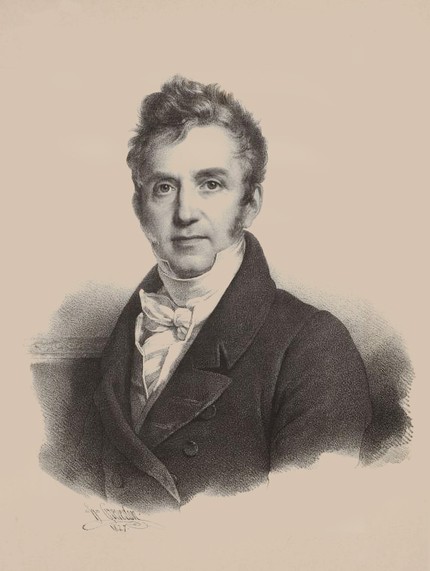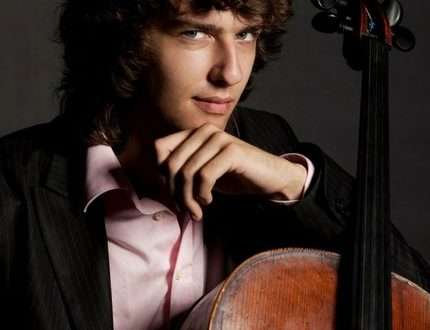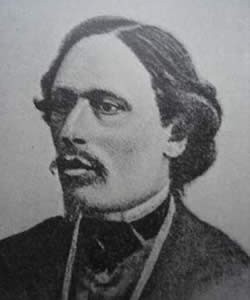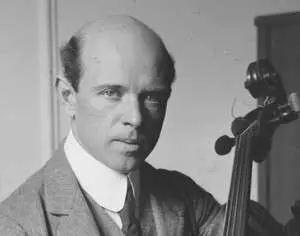
Pierre Rode |
Pierre Rode

At the turn of the XNUMXth-XNUMXth centuries in France, which was going through an era of violent social upheavals, a remarkable school of violinists was formed, which received worldwide recognition. Its brilliant representatives were Pierre Rode, Pierre Baio and Rodolphe Kreuzer.
Violinists of different artistic personalities, they had much in common in aesthetic positions, which allowed historians to unite them under the title of the classical French violin school. Brought up in the atmosphere of pre-revolutionary France, they began their journey with admiration for the encyclopedists, the philosophy of Jean-Jacques Rousseau, and in music they were passionate adherents of Viotti, in whose noblely restrained and at the same time oratorically pathetic game they saw an example of the classical style in the performing arts. They felt Viotti as their spiritual father and teacher, although only Rode was his direct student.
All this united them with the most democratic wing of French cultural figures. The influence of the ideas of the encyclopedists, the ideas of the revolution, is clearly felt in the “Methodology of the Paris Conservatory” developed by Bayot, Rode and Kreutzer, “in which musical and pedagogical thought perceives and refracts … the worldview of the ideologists of the young French bourgeoisie.”
However, their democratism was limited mainly to the sphere of aesthetics, the field of art, politically they were quite indifferent. They did not have that fiery enthusiasm for the ideas of the revolution, which distinguished Gossek, Cherubini, Daleyrac, Burton, and therefore they were able to stay at the center of the musical life of France in all social changes. Naturally, their aesthetics did not remain unchanged. The transition from the revolution of 1789 to the empire of Napoleon, the restoration of the Bourbon dynasty and, finally, to the bourgeois monarchy of Louis Philippe, accordingly changed the spirit of French culture, to which its leaders could not remain indifferent. The musical art of those years evolved from classicism to “Empire” and further to romanticism. The former heroic-civil tyrannical motifs in the era of Napoleon were supplanted by pompous rhetoric and ceremonial brilliance of the “Empire”, internally cold and rationalistic, and the classicist traditions acquired the character of a good academic. Within the framework of it, Bayo and Kreutzer finish their artistic career.
On the whole, they remain true to classicism, and precisely in its academized form, and are alien to the emerging romantic direction. Among them, one Rode touched romanticism with the sentimentalist-lyrical aspects of his music. But still, in the nature of the lyrics, he remained more a follower of Rousseau, Megul, Grétry and Viotti than a herald of a new romantic sensibility. After all, it is no coincidence that when the flowering of romanticism came, the works of Rode lost popularity. Romantics did not feel in them consonance with their system of feelings. Like Bayo and Kreutzer, Rode entirely belonged to the era of classicism, which determined his artistic and aesthetic principles.
Rode was born in Bordeaux on February 16, 1774. From the age of six, he began to study the violin with André Joseph Fauvel (senior). Whether Fauvel was a good teacher is difficult to say. The rapid extinction of Rode as a performer, which became the tragedy of his life, may have been caused by the damage done to his technique by his initial teaching. One way or another, Fauvel could not provide Rode with a long performing life.
In 1788, Rode went to Paris, where he played one of Viotti’s concertos to the then-famous violinist Punto. Struck by the boy’s talent, Punto leads him to Viotti, who takes Rode as his student. Their classes last for two years. Rode is making dizzying progress. In 1790, Viotti released his student for the first time in an open concert. The debut took place at the Theater of the brother of the King during the intermission of an opera performance. Rode played Viotti’s Thirteenth Concerto, and his fiery, brilliant performance captivated the audience. The boy is only 16 years old, but, by all accounts, he is the best violinist in France after Viotti.
In the same year, Rode began to work in the excellent orchestra of the Feydo Theater as an accompanist of the second violins. At the same time, his concert activity unfolded: on Easter week 1790, he carried out a grandiose cycle for those times, playing 5 Viotti concertos in a row (Third, Thirteenth, Fourteenth, Seventeenth, Eighteenth).
Rode spends all the terrible years of the revolution in Paris, playing in the theater of Feydo. Only in 1794 did he undertake his first concert trip together with the famous singer Garat. They go to Germany and perform in Hamburg, Berlin. Rohde’s success is exceptional, the Berlin Musical Gazette enthusiastically wrote: “The art of his playing met all expectations. Everyone who has heard his famous teacher Viotti unanimously asserts that Rode has completely mastered the teacher’s excellent manner, giving it even more softness and tender feeling.
The review emphasizes the lyrical side of Rode’s style. This quality of his playing is invariably emphasized in the judgments of his contemporaries. “Charm, purity, grace” – such epithets are awarded to Rode’s performance by his friend Pierre Baio. But in this way, Rode’s playing style apparently differed markedly from Viotti’s, because it lacked heroic-pathetic, “oratorical” qualities. Apparently, Rode captivated the listeners with harmony, classicist clarity and lyricism, and not with the pathetic elation, masculine strength that distinguished Viotti.
Despite the success, Rode longs to return to his homeland. Having stopped concerts, he goes to Bordeaux by sea, as traveling by land is risky. However, he fails to get to Bordeaux. A storm breaks out and drives the ship on which he travels to the shores of England. Not at all discouraged. Rode rushes to London to see Viotti, who lives there. At the same time, he wants to speak to the London public, but, alas, the French in the English capital are very wary, suspecting everyone of Jacobin sentiments. Rode is forced to confine himself to participating in a charity concert in favor of widows and orphans, and thus leaves London. The way to France is closed; the violinist returns to Hamburg and from here through Holland makes his way to his homeland.
Rode arrived in Paris in 1795. It was at this time that Sarret sought from the Convention a law on the opening of a conservatory – the world’s first national institution, where musical education becomes a public affair. Under the shadow of the conservatory, Sarret gathers all the best musical forces that were then in Paris. Catel, Daleyrak, Cherubini, cellist Bernard Romberg, and among the violinists, the aged Gavignier and the young Bayot, Rode, Kreutzer receive an invitation. The atmosphere in the conservatory is creative and enthusiastic. And it is not clear why, having been in Paris for a relatively short time. Rode drops everything and leaves for Spain.
His life in Madrid is notable for his great friendship with Boccherini. A great artist does not have a soul in a hot young Frenchman. The ardent Rode loves to compose music, but has poor command of instrumentation. Boccherini willingly does this work for him. His hand is clearly felt in the elegance, lightness, grace of orchestral accompaniments of a number of Rode’s concertos, including the famous Sixth Concerto.
Rode returned to Paris in 1800. During his absence important political changes took place in the French capital. General Bonaparte became the first consul of the French Republic. The new ruler, gradually discarding republican modesty and democracy, sought to “furnish” his “court”. At his “court” an instrumental chapel and an orchestra are organized, where Rode is invited as a soloist. The Paris Conservatory also cordially opens its doors to him, where an attempt is made to create schools of methodology in the main branches of music education. The violin school-method is written by Baio, Rode and Kreutzer. In 1802, this School (Methode du violon) was published and received international recognition. However, Rode did not take such a big part in its creation; Baio was the main author.
In addition to the conservatory and the Bonaparte Chapel, Rode is also a soloist at the Paris Grand Opera. During this period, he was a favorite of the public, is at the zenith of fame and enjoys the unquestioned authority of the first violinist in France. And yet again, restless nature does not allow him to remain in place. Seduced by his friend, the composer Boildieu, in 1803 Rode left for St. Petersburg.
The success of Rode in the Russian capital is truly enchanting. Presented to Alexander I, he is appointed soloist of the court, with an unheard-of salary of 5000 silver rubles a year. He’s hot. St. Petersburg high society is vying with each other trying to get Rode into their salons; he gives solo concerts, plays in quartets, ensembles, solo in the imperial opera; his compositions enter everyday life, his music is admired by lovers.
In 1804, Rode traveled to Moscow, where he gave a concert, as evidenced by the announcement in Moskovskie Vedomosti: “Mr. Rode, the first violinist of His Imperial Majesty, has the honor to notify the venerable public that he will give a concert on April 10, Sunday, in his favor in the large hall of the Petrovsky Theater, in which he will play various pieces of his composition. Rode stayed in Moscow, apparently for a decent amount of time. So, in S.P. Zhikharev’s “Notes” we read that in the salon of the famous Moscow music lover V.A. Vsevolozhsky in 1804-1805 there was a quartet in which “last year Rode held the first violin, and Batllo, viola Frenzel and cello still Lamar. True, the information reported by Zhikharev is not accurate. J. Lamar in 1804 could not play in a quartet with Rode, because he arrived in Moscow only in November 1805 with Bayo.
From Moscow, Rode again went to St. Petersburg, where he remained until 1808. In 1808, despite all the attention he was surrounded by, Rode was forced to leave for his homeland: his health could not stand the harsh northern climate. On the way, he again visited Moscow, where he met with old Parisian friends who had lived there since 1805 – the violinist Bayo and the cellist Lamar. In Moscow, he gave a farewell concert. “Mr. Rode, the first violinist of the Kammera of His Majesty the Emperor of All Russia, passing through Moscow abroad, on Sunday, February 23, will have the honor to give a concert for his benefit performance in the hall of the Dance Club. Contents of the concert: 1. Symphony by Mr. Mozart; 2. Mr. Rode will play a concerto of his composition; 3. Huge Overture, Op. city of Cherubini; 4. Mr. Zoon will play the Flute Concerto, Op. Kapellmeister Mr. Miller; 5. Mr. Rode will play a concert of his composition, presented to His Majesty Emperor Alexander Pavlovich. Rondo is mostly taken from many Russian songs; 6. Final. The price is 5 rubles for each ticket, which can be obtained from Mr. Rode himself, who lives on Tverskaya, in the house of Mr. Saltykov with Madame Shiu, and from the housekeeper of the Dance Academy.
With this concert, Rode said goodbye to Russia. Arriving in Paris, he soon gave a concert in the hall of the Odeon theater. However, his playing did not arouse the former enthusiasm of the audience. A depressing review appeared in the German Musical Gazette: “On his return from Russia, Rode wanted to reward his compatriots for depriving them of the pleasure of enjoying his wonderful talent for so long. But this time, he wasn’t so lucky. The choice of concerto for performance was made by him very unsuccessfully. He wrote it in St. Petersburg, and it seems that the cold of Russia did not remain without influence on this composition. Rode made too little impression. His talent, completely finished in its development, still leaves much to be desired in regard to fire and inner life. Roda was especially hurt by the fact that we heard Lafon in front of him. This is now one of the favorite violinists here.”
True, the recall does not yet speak of the decline of Rode’s technical skill. The reviewer was not satisfied with the choice of a “too cold” concerto and the lack of fire in the artist’s performance. Apparently, the main thing was the changed tastes of the Parisians. The “classic” style of Rode ceased to meet the needs of the public. Much more she was now impressed by the graceful virtuosity of the young Lafont. The tendency of passion for instrumental virtuosity was already making itself felt, which would soon become the most characteristic sign of the coming era of romanticism.
The failure of the concert struck Rode. Perhaps it was this performance that caused him an irreparable mental trauma, from which he never recovered until the end of his life. There was no trace left of Rode’s former sociability. He withdraws into himself and until 1811 stops public speaking. Only in the home circle with old friends – Pierre Baio and cellist Lamar – does he play music, playing quartets. However, in 1811 he decides to resume concert activity. But not in Paris. Not! He travels to Austria and Germany. Concerts are painful. Rode has lost confidence: he plays nervously, he develops a “fear of the stage.” Hearing him in Vienna in 1813, Spohr writes: “I expected, almost with feverish trembling, the beginning of the game of Rode, which ten years before I considered my greatest example. However, after the very first solo, it seemed to me that Rode had taken a step back during this time. I found his playing cold and campy; he lacked his former courage in difficult places, and I felt dissatisfied even after Cantabile. While performing the E-dur variations that I heard from him ten years ago, I was finally convinced that he had lost a lot in technical fidelity, because he not only simplified difficult passages, but performed even easier passages cowardly and incorrectly.
According to the French musicologist-historian Fetis, Rode met Beethoven in Vienna, and Beethoven wrote a Romance for him (F-dur, op. 50) for violin and orchestra, “that is, that Romance,” adds Fetis, “which then with such successfully performed by Pierre Baio in conservatory concerts. However, Riemann, and after him Bazilevsky dispute this fact.
Rode finished his tour in Berlin, where he stayed until 1814. He was detained here by personal business – his marriage to a young Italian woman.
Returning to France, Rode settled in Bordeaux. Subsequent years do not provide the researcher with any biographical material. Rode does not perform anywhere, but, in all likelihood, he is working hard to restore his lost skills. And in 1828, a new attempt to appear before the public – a concert in Paris.
It was a complete failure. Rode did not bear it. He fell ill and after a two-year painful illness, on November 25, 1830, he died in the town of Château de Bourbon near Damazon. Rode fully drank the bitter cup of the artist from whom fate took away the most precious thing in life – art. And yet, despite the too short period of creative flowering, his performing activity left a deep mark on French and world musical art. He was also popular as a composer, although his possibilities in this regard were limited.
His creative heritage includes 13 violin concertos, bow quartets, violin duets, many variations on various themes and 24 caprices for solo violin. Until the middle of the 1838th century, Rohde’s works were universally successful. It should be noted that Paganini wrote the famous Concerto in D major according to the plan of the First Violin Concerto by Rode. Ludwig Spohr came from Rode in many ways, creating his concerts. Rode himself in the concert genre followed Viotti, whose work was an example for him. Rode’s concertos repeat not only the form, but also the general layout, even the intonational structure of Viotti’s works, differing only in great lyricism. The lyricism of their “simple, innocent, but full of feeling melodies” was noted by Odoevsky. The lyrical cantilena of Rode’s compositions was so attractive that his variations (G-dur) included in the repertoire of the outstanding vocalists of that era Catalani, Sontag, Viardot. On Vieuxtan’s first visit to Russia in 15, in the program of his first concert on March XNUMX, Hoffmann sang variations of Rode.
The works of Rode in Russia enjoyed great love. They were performed by almost all violinists, professionals and amateurs; they penetrated into the Russian provinces. The archives of the Venevitinovs preserved the programs of home concerts held at the Luizino estate of the Vielgorskys. At these evenings, the violinists Teplov (the landowner, neighbor of the Vielgorskys) and the serf Antoine performed concertos by L. Maurer, P. Rode (Eighth), R. Kreutzer (Nineteenth).
By the 40s of the 24th century, Rode’s compositions began to gradually disappear from the concert repertoire. Only three or four concertos have been preserved in the educational practice of violinists of the school period of study, and XNUMX caprices are considered today as a classic cycle of the etude genre.
L. Raaben





